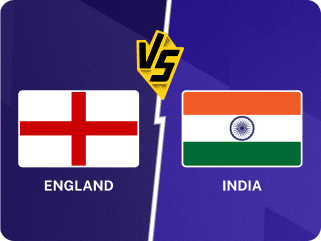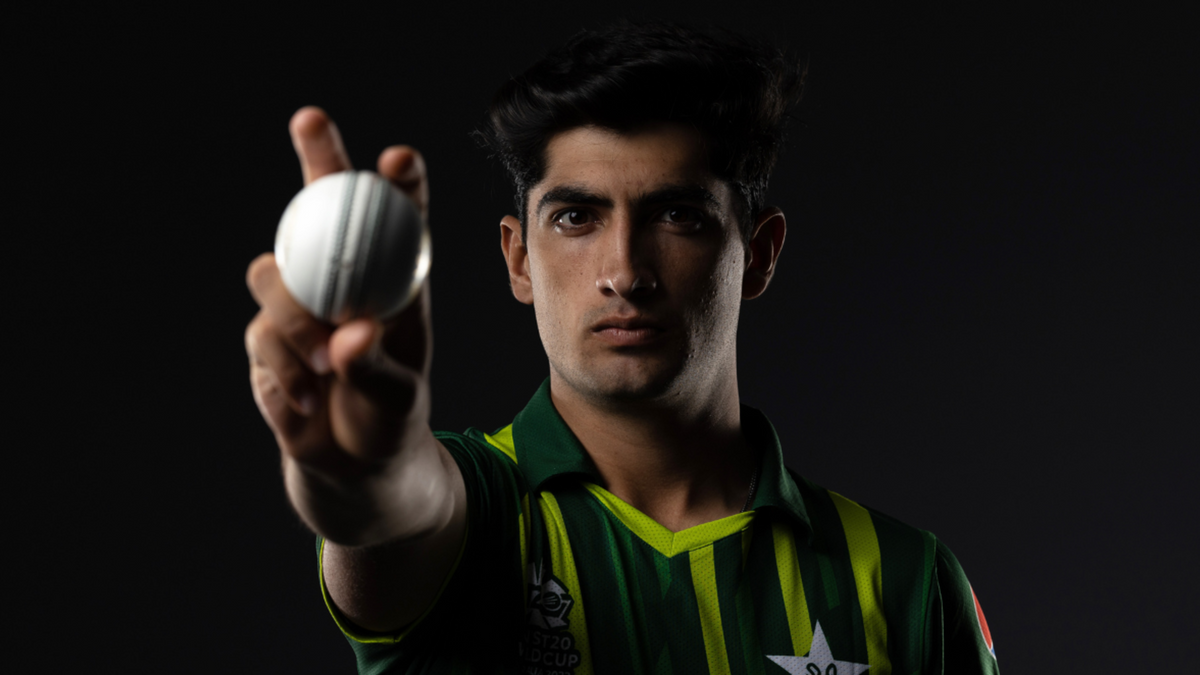
Naseem Shah has been one of the most exciting young quicks around for a while now, and he is only just getting started. He narrates his story so far to Aadya Sharma.
Karachi, 2023.
Kane Williamson, a 90-Test veteran, has little clue. Delivery after delivery darts past, missing the slice by inches. A couple of them move back in, forcing him to jam his bat. No one knows where it’s going next. And then, it happens: a loose forward prod, feathered behind. Naseem Shah is off, jogging away, arms extended in happiness.
“Speed is important – as a quick, it feels lovely to run in hard and bowl fast,” Naseem tells Wisden in an interview during England’s tour in December. “But, if you’re just bowling fast, it’s easier [for batters] today. If you bowl fast and hit the seam or swing the ball with speed, that helps a lot.”
In Karachi, he seamed it at pace. Out came the bouncy, throbbing action, piercing through dry air, flinging the ball on the dusty pitch, before it swayed to one side and took an edge. Naseem happy. Pakistan happy. It’s a familiar sight now.
Once a tragedy-scarred teenager on Test debut in Australia, Naseem is now one of the team’s premier quicks. Among all Pakistan bowlers, only Waqar Younis has taken more five-wicket hauls before turning 20. Experts rate him highly, fans rave over him wildly. In just over three years, he’s shown he isn’t your average comes-in-and-bowls-fast, adrenaline-charged teenager. He’s all that too, but he’s also smart and aware.
“For those who bowl at 130-135 kph, it’s easy to seam the ball,” he says. “But if you are clocking 140-145 kph and can swing and seam the ball, then you enjoy it, and it helps much more. If you’re just bowling fast, the pitch is placid and nothing’s happening – if you don’t know how to seam it, it just becomes easy for today’s batsmen. The faster you bowl, the easier it is to get hit these days.”
A darling of the masses and a delight for the cameras, Naseem never shies from beaming his 100-watt smile. The bright grin sparkles through, but it also hides years of toil and hardship. Not too long ago, he was a hopeful kid hailing from a little village in the picturesque Lower Dir, once a fragment of a princely state, and far away from the cricketing hotspots of Pakistan.
“We would watch matches in our small village,” Naseem recollects. “There would be match screenings in our locality, especially when Pakistan were playing a World Cup game. For India-Pakistan, the entire village would congregate and watch together. We would watch closely, and once we’d gone back home, we’d discuss the match in detail: ‘He should have played like this’, ‘Why did we lose…’.
“At that time, I never thought I’d play cricket for Pakistan…”
Inspired by the figures on screen, Naseem began playing inside his house, with a tape ball, or any ball he could lay his hands on. But it was the sight of Shane Bond – New Zealand’s Noughties bombshell – that pulled him into the world of fast bowling. Like several kids that age, the foremost lesson came by watching and imitating.
The inspiration still holds. Beyond the pretty face and muscly frame fit for a fast-bowling museum, both have a similarly jaunty action that concludes with a lovely release.
“I really liked Bond’s action,” Naseem says. “I would try and bowl like him. When we’d go to the ground to play with tape ball, we’d think: ‘I need to bowl like Shoaib Akhtar now!’ Whatever we saw on TV and mobile, we would try and mimic that. I liked Bond’s action a lot and wanted to copy that.”
His interest began to sprout as he took his first steps into hard-ball cricket and realised how good he was. Stick to the sport too long and it becomes an obsession. Naseem knew he wanted to play the game seriously, but small-towners are seldom allowed to dream. To start with, he faced resistance at home.
“My family did not support me – because they had no idea about cricket; they used to think it’s a waste of time. ‘Who can go all the way from our little village’, they’d say. ‘Only well-off people play cricket. They come from big cities’.
“These things were never on my mind. But I just had the desire to somehow play hard-ball.”
To fulfil that desire, Naseem moved to Lahore, and accompanied by his uncle, visited the Abdul Qadir International Cricket Academy. That’s when Sulaman Qadir, son of the great Pakistan spinner, and a former first-class cricketer who oversaw operations at the academy, first met Naseem. Busy with work, he asked one of his coaches to check how Naseem bowled. The coach returned soon after, asking Sulaman to have a look himself.
“He was wearing kameez salwar [a traditional subcontinent attire – long top and trousers],” Sulaman tells Wisden, recalling his first meeting with Naseem. “I asked him if he would bowl in those. He said ‘Yes, I’ll bowl in this only’. At first, he refused, saying he didn’t want to bowl anymore: ‘I’ve bowled how much I had to’. But then the uncle told him in Pashto, ‘He’s Abdul Qadir’s son, he runs the academy. He needs to have a look before we go any further’.”
He finally agreed and went back to his mark again. It took three deliveries, and Sulaman was convinced. A journey had begun.
***
Lahore, somewhere in the 2010s.
“No one’s taking catches off my bowling only!”
Fielding at the ropes, Naseem innocently complained to coach Sulaman, standing on the other side. “How do you expect them to take catches when you’re bowling so fast?” exclaimed Sulaman, watching the U16 game at the Lahore Cricket Association. “Bowl cross-seam yorkers into the wicket”. That was it. Timber started rattling, and from there on, Naseem developed a penchant cleaning up stumps.
And bouncers. Naseem had to wait a whole year after being rejected at an U16 trial, but returned with new-found fire. “Show them how you can bowl,” his mentor instructed, asking him to target a couple of opposition helmets with aggression. He happily obliged, and got selected.
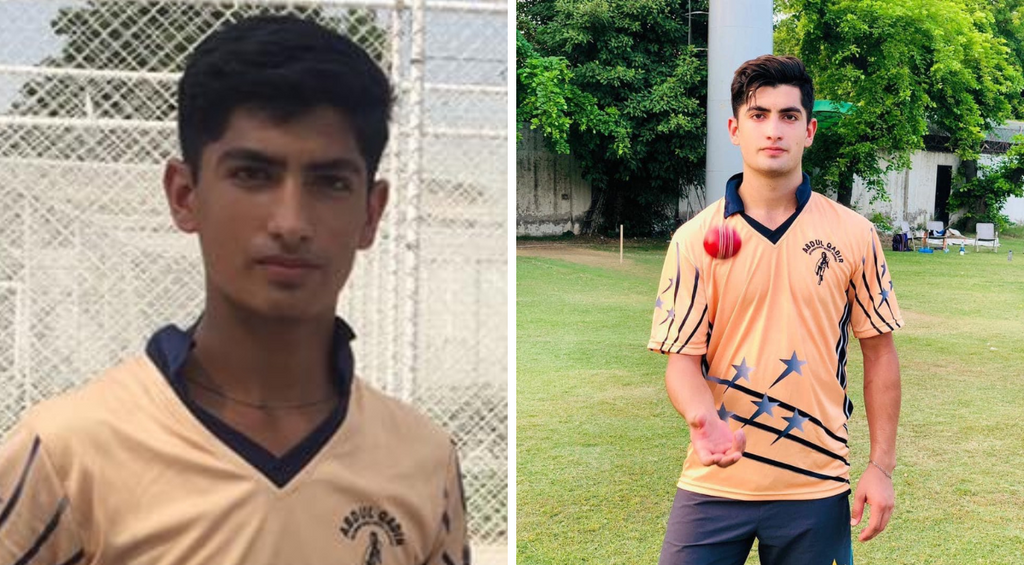 A younger Naseem Shah in his academy colours. Picture: Sulaman Qadir/AQICA
A younger Naseem Shah in his academy colours. Picture: Sulaman Qadir/AQICA
At the academy, Naseem’s art received polish and finesse, but the basics of that yorker and bouncer had already developed through countless hours of tape-ball bowling. The bandaged tennis ball is still his ally, and even as an international cricketer, he squeezes out time to play with it.
“The yorker and bouncer are the two most important deliveries in tape-ball cricket,” Naseem explains.
“If you bowl a yorker – tape-ball batters play them really well – they can even hit yorkers, even if you just slightly miss your mark. You need to make your yorker extremely accurate and put a lot of effort into them. Because of that, the action becomes faster, which helps in hard-ball as well.”
“I feel that – and I might be wrong – when I play tape-ball, I put in more effort [into my bowling]. My action is faster, because when we used to play with a tape ball in our village, we used to bowl two deliveries: the yorker and the bouncer.”
Some of those yorkers and bouncers came in life too. Even as Naseem went higher up – U16, Grade II, U19 – he was surrounded by a wave of cynicism. Back home, nagging pessimists made him doubt his own abilities.
“In Lahore, I used to stay in a hostel,” Naseem recalls. “Whenever I would return to my village, people would ask: ‘Why are you wasting your time? Who can possibly play cricket from our locality? You can only go up by someone’s recommendation, it is just too difficult’.
“There were times when I used to think: ‘Maybe, this is what happens. How can I, hailing from a little village, really play cricket?’ But there was an immense desire to somehow just play. ‘Whatever happens in the future, happens. But I want to play.’”
But Naseem was junooni. “You need to be passionate,” says Sulaman. “That’s what set him apart from the rest.”
***
Sharjah, 2022.
Naseem, bat in hand, surveys the field. Pakistan are nine down, needing 11 from six against Afghanistan in the Asia Cup. Fazalhaq Farooqi is waiting with a worn-out white ball.
First ball, full toss, and Naseem heaves it over long-off. The commentators calls him “Hasnain” in excitement, but it is Naseem. Barely flinching, not even a speck of nerves. He nods and assures his partner that the job will be done. Next ball’s another full toss, and he slaps it again. As soon as the ball is over the ropes, Naseem bolts like a cheetah on a gazelle, violently flinging his bat aside, throwing his helmet away and sprinting, all the emotions suddenly let loose like an uncorked champagne. He throws his gloves before being engulfed by his teammates. The junoon was evident.
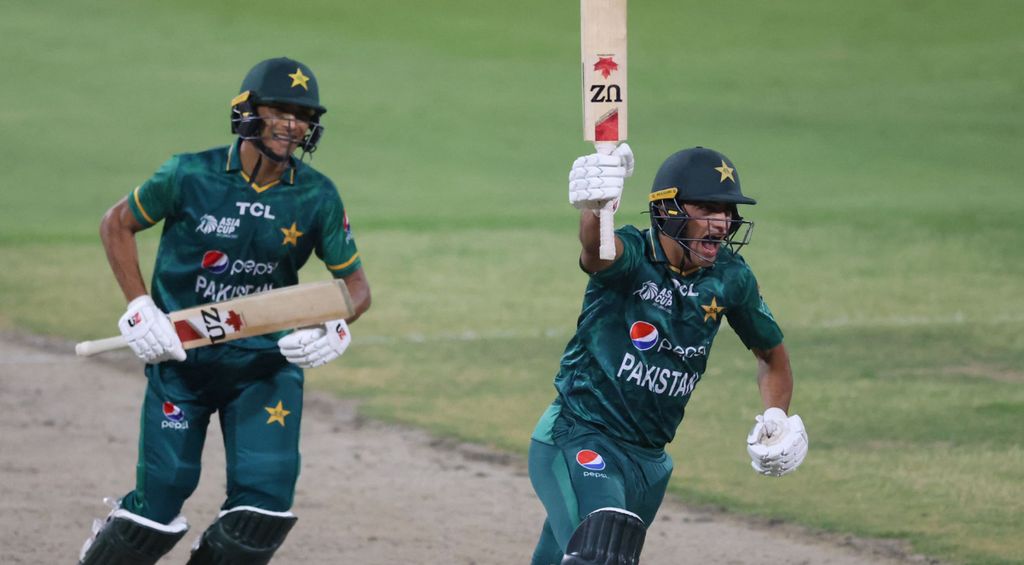 “It was an incredible moment to win it with one wicket in hand. Nothing’s greater than the team winning.”
“It was an incredible moment to win it with one wicket in hand. Nothing’s greater than the team winning.”
“I wasn’t supposed to go in at No.10…”, Naseem reveals, “but Babar pushed me up a spot. I thought ‘At least someone has confidence in me that I can do something!'”
“[Batting] coach [Mohammad] Yousuf had seen me in the nets and used to remind me ‘You can do it!’. That elevated my belief. I had self-belief, but being backed by others made me feel that I just might have it in myself.”
“I thought: ‘I bat in tape ball as well. It’s just about two shots.’ Cricket is such a game – you put in the effort and leave the result to the Almighty.
“I tried and it worked.”
Naseem owned the big stage that day, serving another reminder of his pressure-soaking prowess. He may not need to, but he intends to chip in with the bat as much as he can. Anything that gets the team to the finishing line.
“Whenever I get a chance, even during off time – when everyone goes home – I work on my batting,” he says, “It’s an advantage, as a fast bowler, if the team has belief in you that you can hit 20-25 runs, it is beneficial to the team and for yourself.”
The Sharjah promotion also tells something about skipper Babar’s faith in the bona-fide star, be it batting or bowling. “A captain can trust you only when you come up with a plan, discuss it with him and execute it,” Naseem says. “Whenever I have asked for a field, he has helped me and given it, while providing his own inputs on where to bowl. He’s been very supportive”.
***
Melbourne, 2022. T20 World Cup final.
Jos Buttler tries to prod at one, and misses. “That’s perfect, absolutely perfect,” exclaims the commentator.
Seven overs later, another delivery flies past Harry Brook, who is at least a second late to his shot. Brook makes the ‘:O’ emoji with his face. Naseem stares and walks off. Next ball, Brook dances out and misses again. Two balls later, Ben Stokes misses one too. You can’t make out what he says, but it’s on the lines of “Nah, I can’t do anything about that”.
Naseem finished with figures of 4-0-30-0, perhaps the most deceptive analysis in World Cup final history. It was a reminder that, even on the grandest of stages, even if you give it your all, things might not end up going your way. At 19, he’s seen enough in his life to know better.
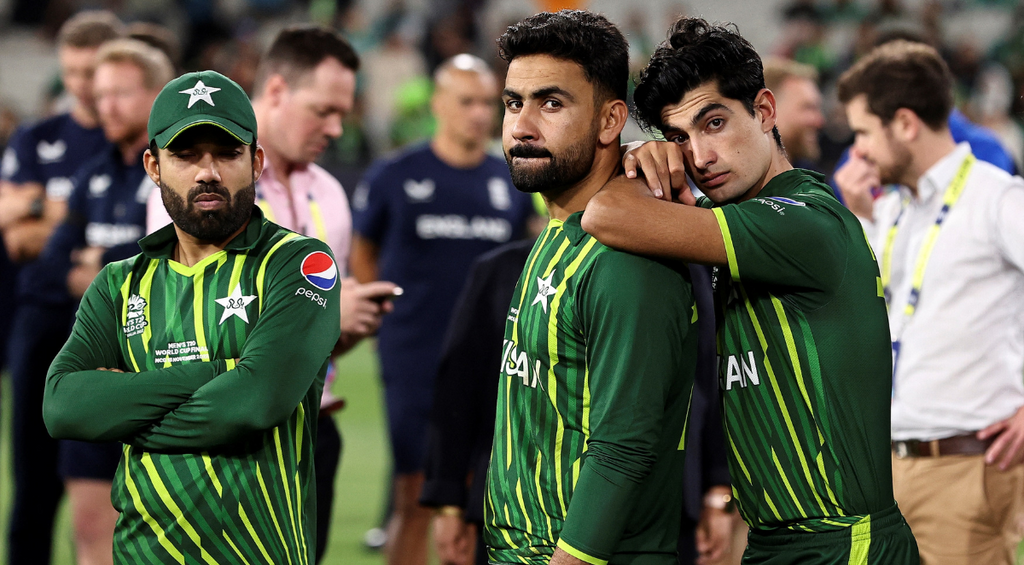 “I enjoyed the final. It was an incredible game. Sometimes, you’re just unlucky.”
“I enjoyed the final. It was an incredible game. Sometimes, you’re just unlucky.”
“Sometimes, you’re just unlucky. The way we were bowling – if, at that juncture, if we took a wicket or two, the scenario could have been different,” Naseem says. “But, that’s what the beauty of cricket is: Sometimes, you are bowling well and you don’t get wickets. Sometimes, you get wickets off deliveries you look back and think: ‘Shit! How did this happen?’”
In Melbourne, Brook departed not long after, but the two have continued their duel since, facing each other in the Test series that followed. Naseem rates him highly, marvelling at his “incredible range of strokes”, and calling him the “toughest to bowl right now”. It’s a battle of youngsters that may blossom over the next decade.
The past hasn’t been kind to every talented quick who went on to play for Pakistan. In case of Naseem though, the expectation has been to excel, even before he had bowled his first delivery in Test cricket. He’s not looking too far into the future. At the heart of it, he’s still the boy from Lower Dir in love with the game.
“I don’t have lofty ambitions,” Naseem says. “I only wish that, when my time as a Pakistan cricketer is done, people remember me in a good way.”





